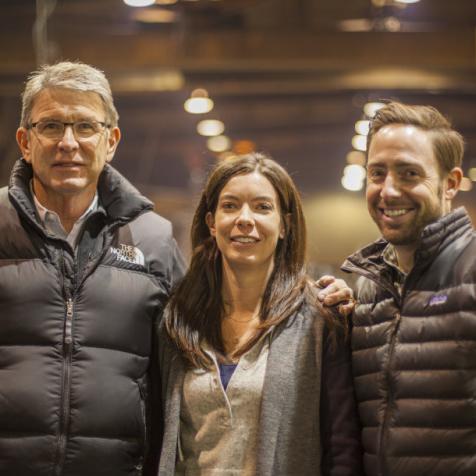
May Foundry & Machine Co.
By Eric Peterson | Dec 01, 2014
Company Details
Location
Salt Lake City, Utah
Founded
1912
Ownership Type
Private
Employees
45
Products
Metalworking
Salt Lake City
Founded: 1912
Privately owned
Employees: 45
GM Mike May is leading his family's century-old foundry to innovative new heights.
The motto at May Foundry is: "You're never more than 20 feet from a casting."
But while cast iron, steel, and metal might be omnipresent, it has something of an image problem.
"We're the big, nasty 'F' word," says May. "Nobody wants foundries."
The reputation is undeserved, he adds. Mike says that foundries are misunderstood. "It's actually a high-tech industry, but people view it as low-tech."

And May Foundry has been setting the pace for foundries in Utah for more than 100 years. Reuben May, Mike's great-grandfather, established the foundry in 1912. "He started out as a patternmaker for the rail industry," says Mike of Reuben. Reuben’s son, Jack, ran the foundry next, followed by grandson Mark.
Over the years, the rail focus shifted as the materials changed. "We used to be just an iron shop," says Mike. "We started pouring steel in the '80s. Now we work with 80 types of metal."
The current May catalog includes next-generation materials like super-duplex stainless steel and ductile iron. "They're super wear-resistant and have high-strength properties," says Mike. The foundry is also home to a machine shop and full heat-treat facility.
The company's wide-ranging skill set is paralleled by a broad market. "Right now, we do everything from military to automotive, industrial, and agriculture," says Mike. "We're pretty diversified. That's been one of the keys to our success."
May Foundry's client roster include blue-chip names like Caterpillar and Barnes Aerospace. "There's been a lot more interest from bigger companies taking on work from small foundries like ours," says Mike.
The company's recent casting work has included diesel turbochargers for HT Turbo in Salt Lake and a number of formerly fabricated parts where casting saves money and time.

May utilizes 3D modeling and other cutting-edge processes before the metal is molten. "It simulated the actual pouring and calculates heat-transfer coefficients to the millisecond," says Mike. The technique allows engineers to solve problems before they happen. In conjunction with rapid prototyping and 3D printing, May is able to run a faster, more efficient, and more flexible operation.
Another highlight has been "onshoring” work back to the U.S. from China and other countries. Mike says the foundry is doing a lot of pump work that was recently going overseas, noting, "It's a lot easier to deal with people a couple states away instead of many time zones and a language away."
Growth has been fairly flat in recent years, and Mike isn't unhappy with May's sales plateau. "Our ability to stick around has been good," he says.
Consider that there are 2,700 foundries in the U.S. today. In 1990, there were three times that number.

Where other foundries have not fared well against these headwinds, May Foundry has succeeded by simply doing what it does best -- for more than a century.
Challenges: "Just continue working on our health and safety practices," says Mike. "We're using top-notch environmental controls and top-of-the-line public safety."
Opportunities: There's plenty more work to be reshored back from China, notes Mike, as well as more opportunity in the automotive aftermarket. "Everybody seems to be building cars with smaller engines, so you need things like turbochargers."
Needs: Skilled talent. Mike says May Foundry is always on the lookout for "qualified mechanics, CAD designers, and foundry workers."

